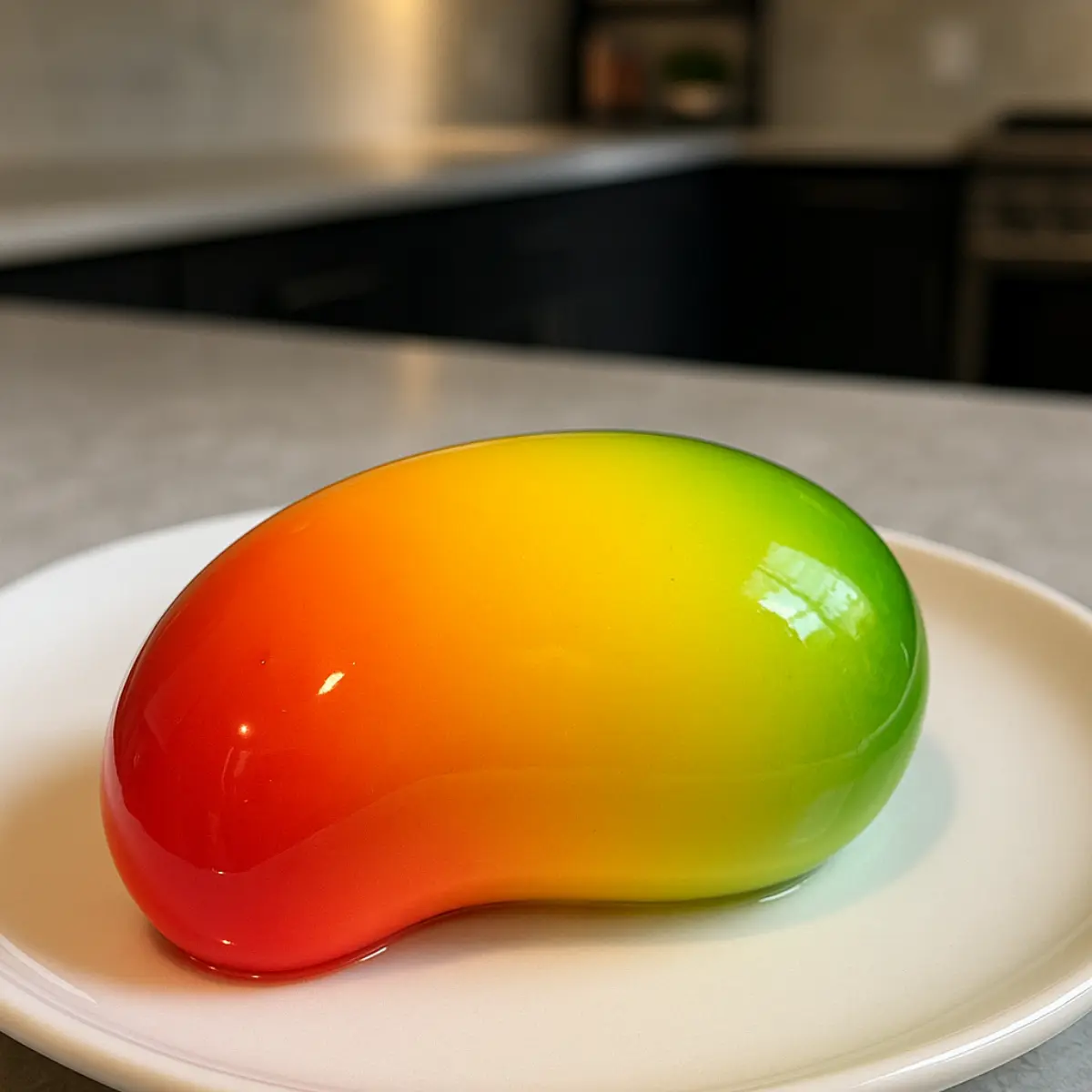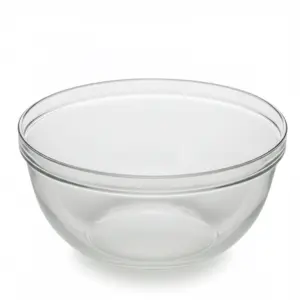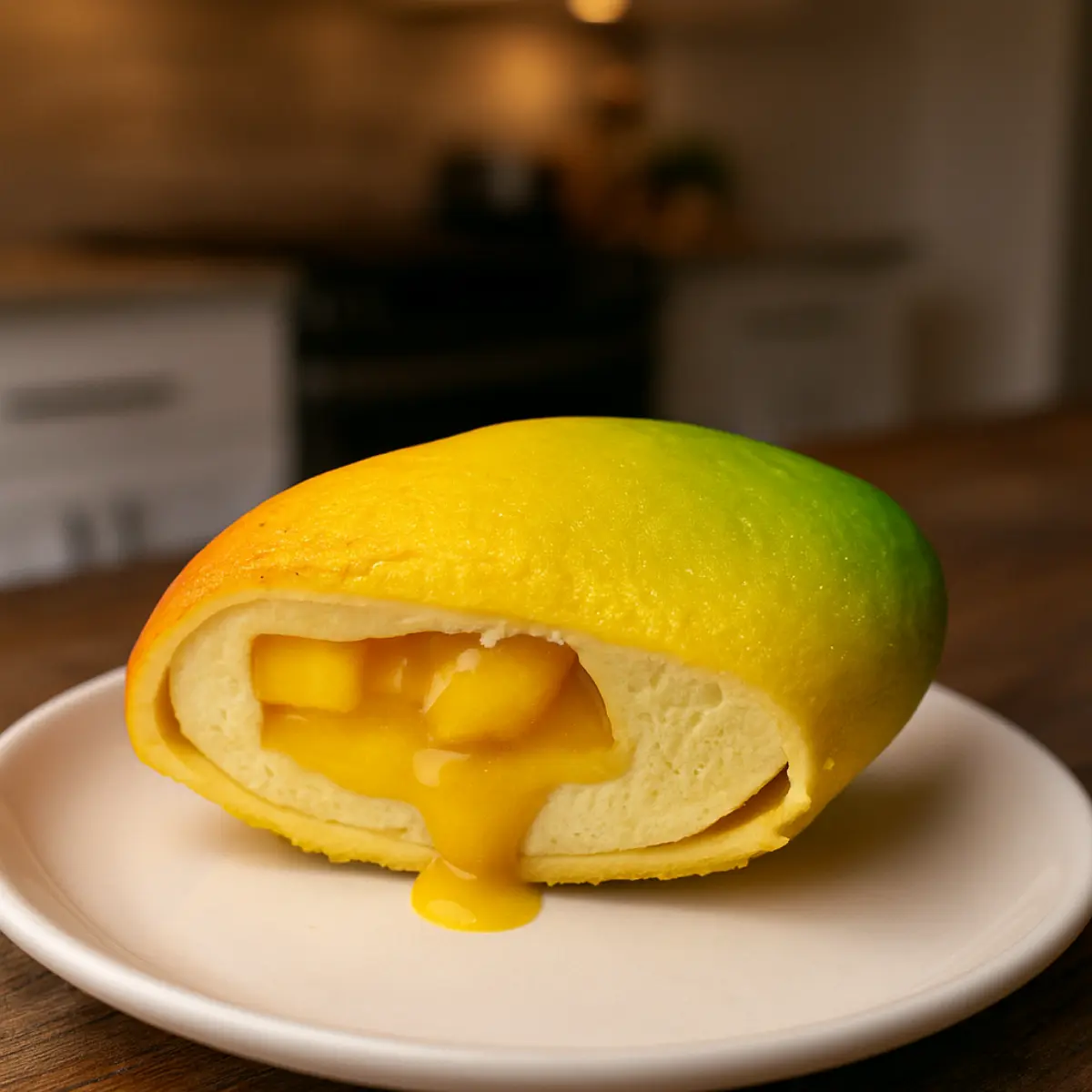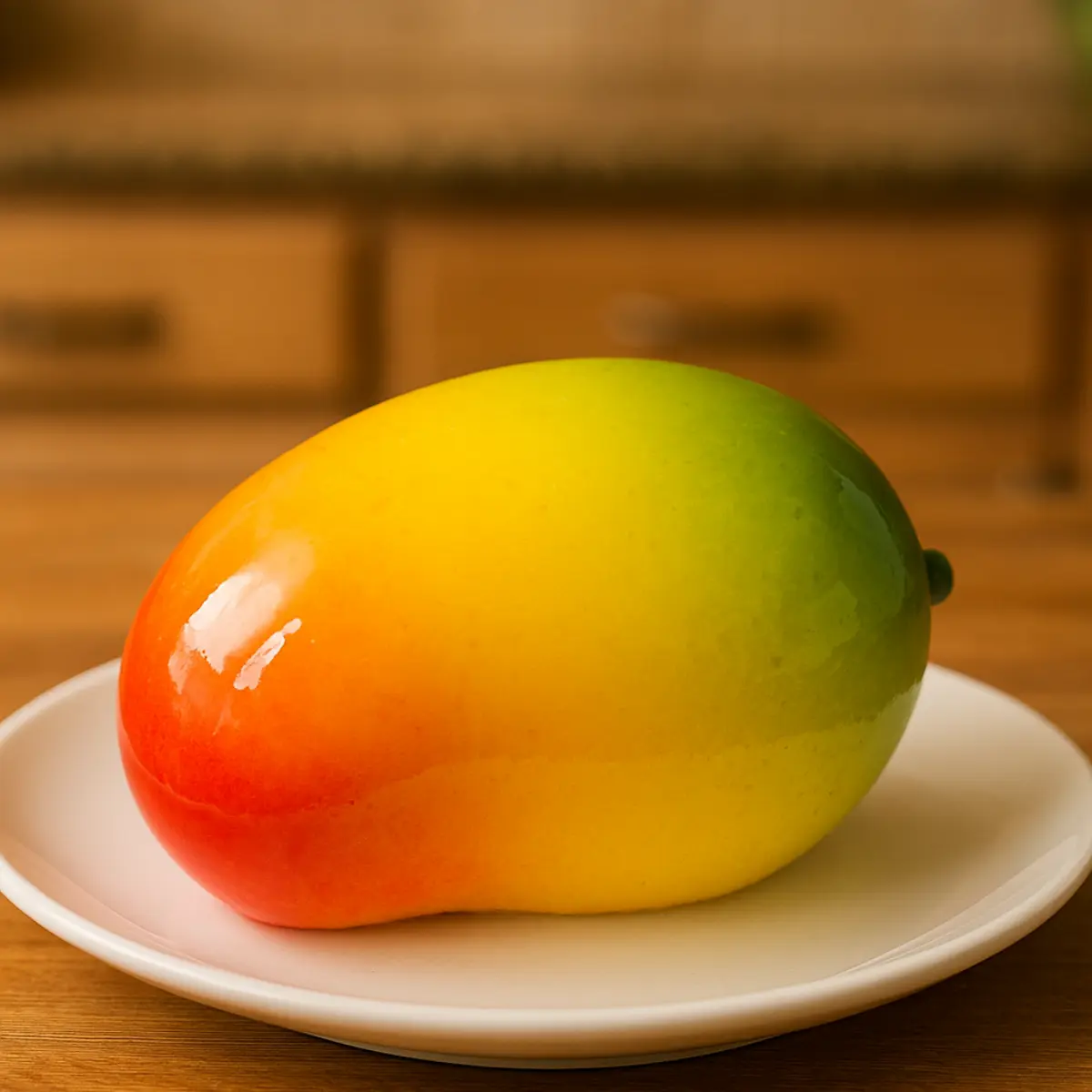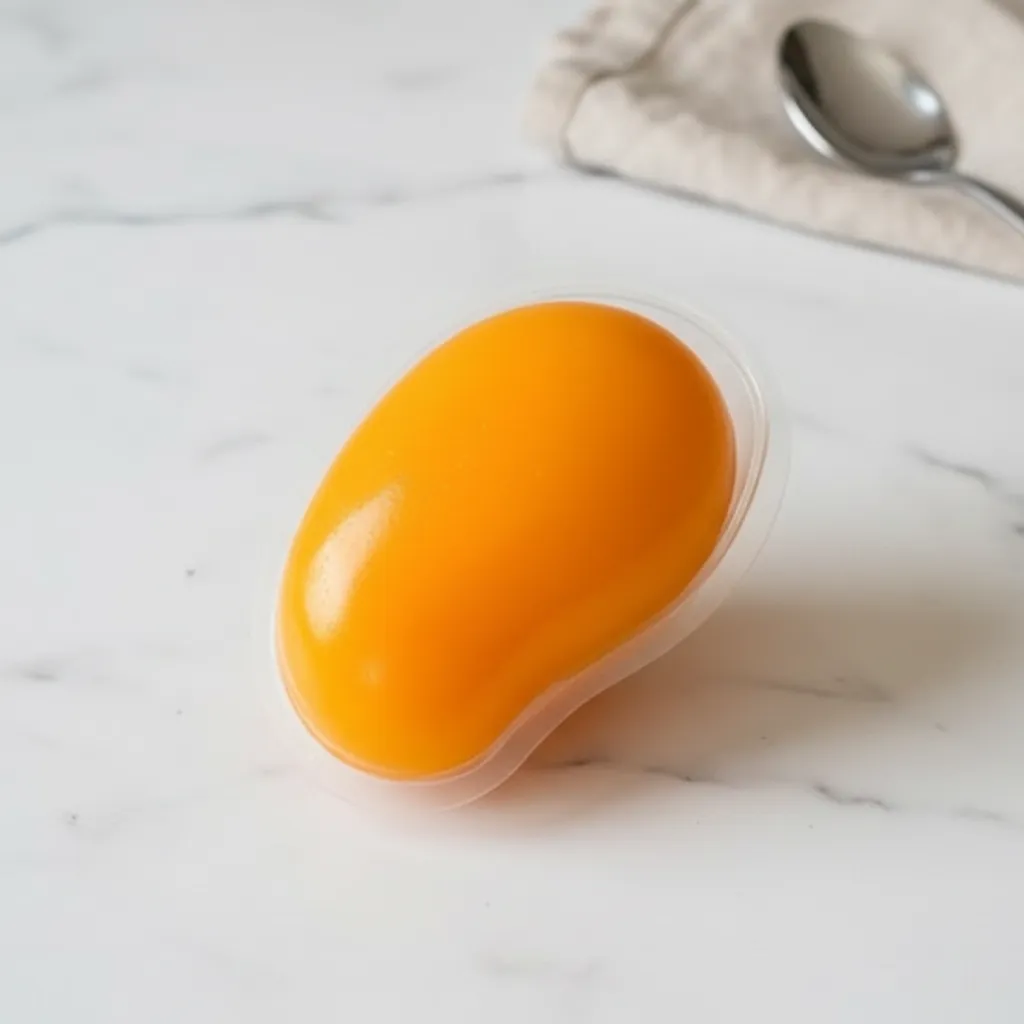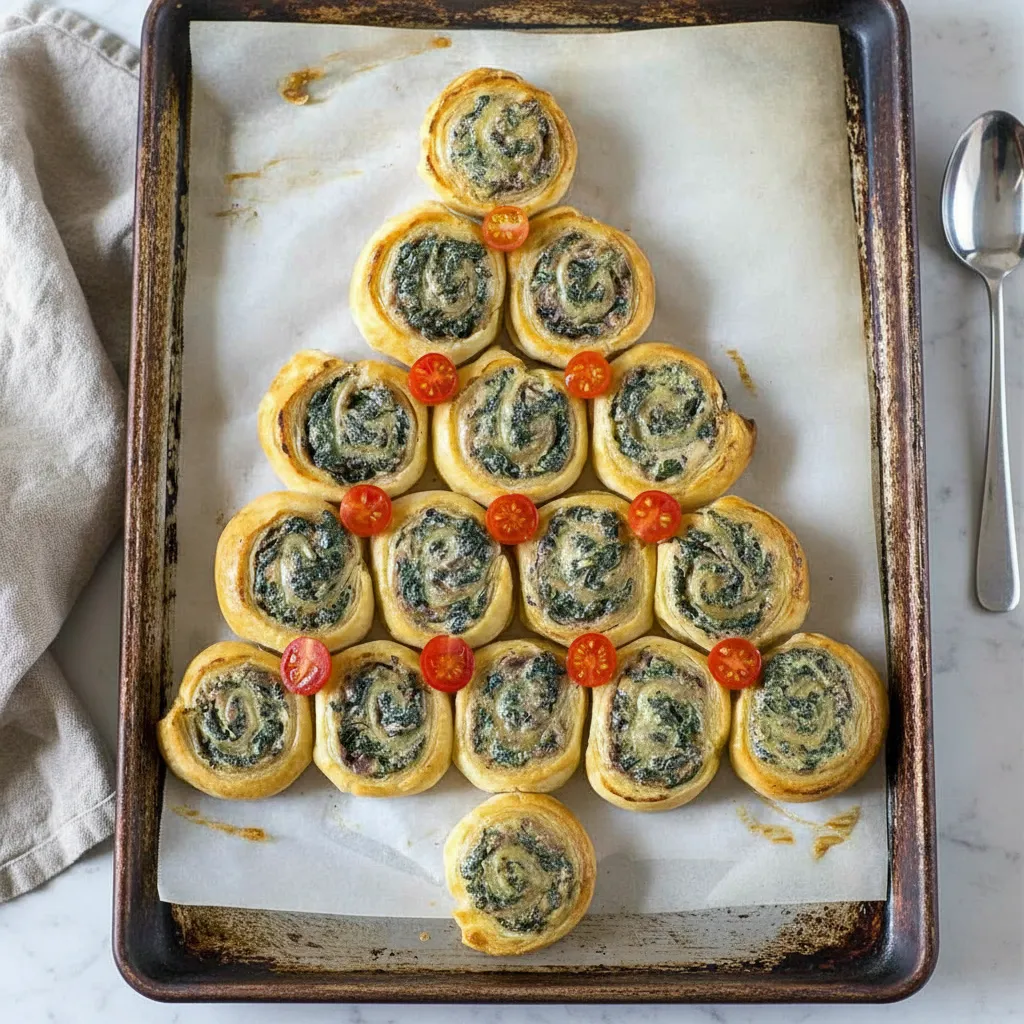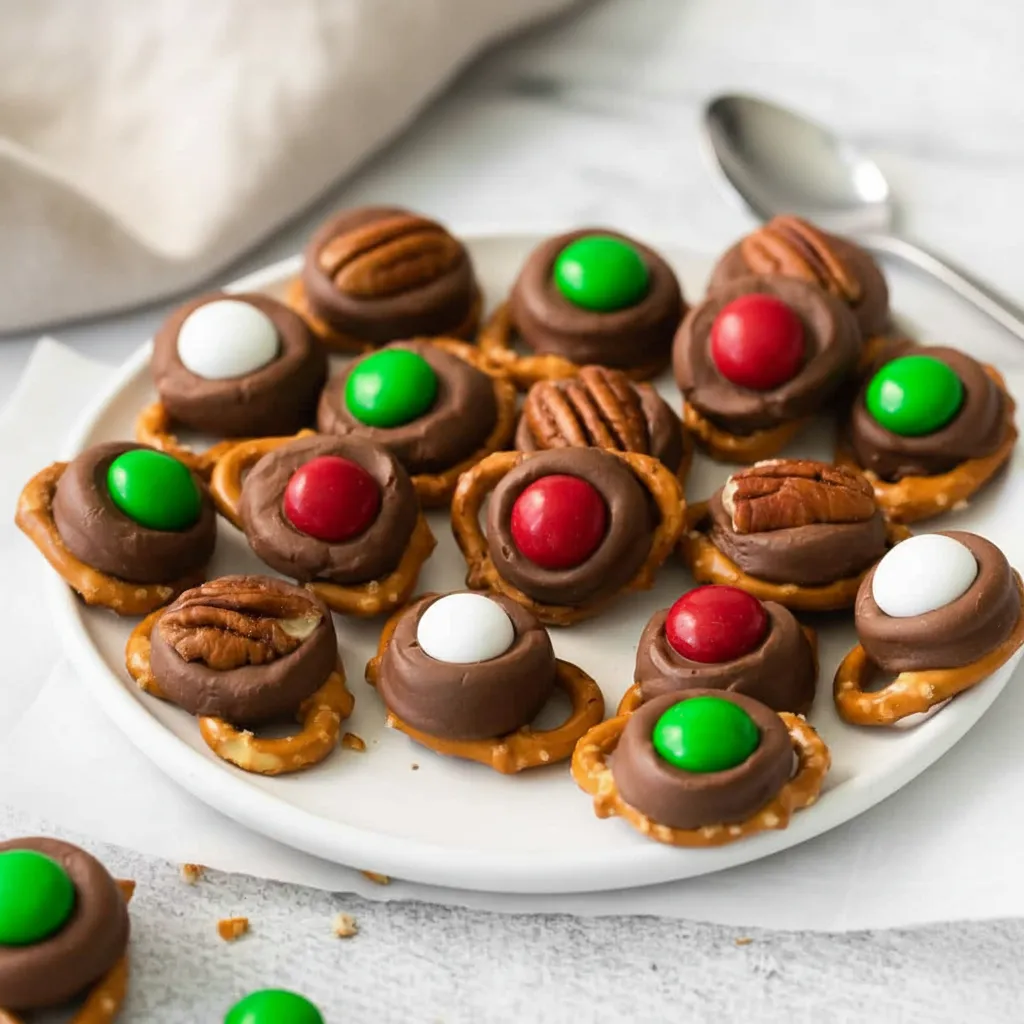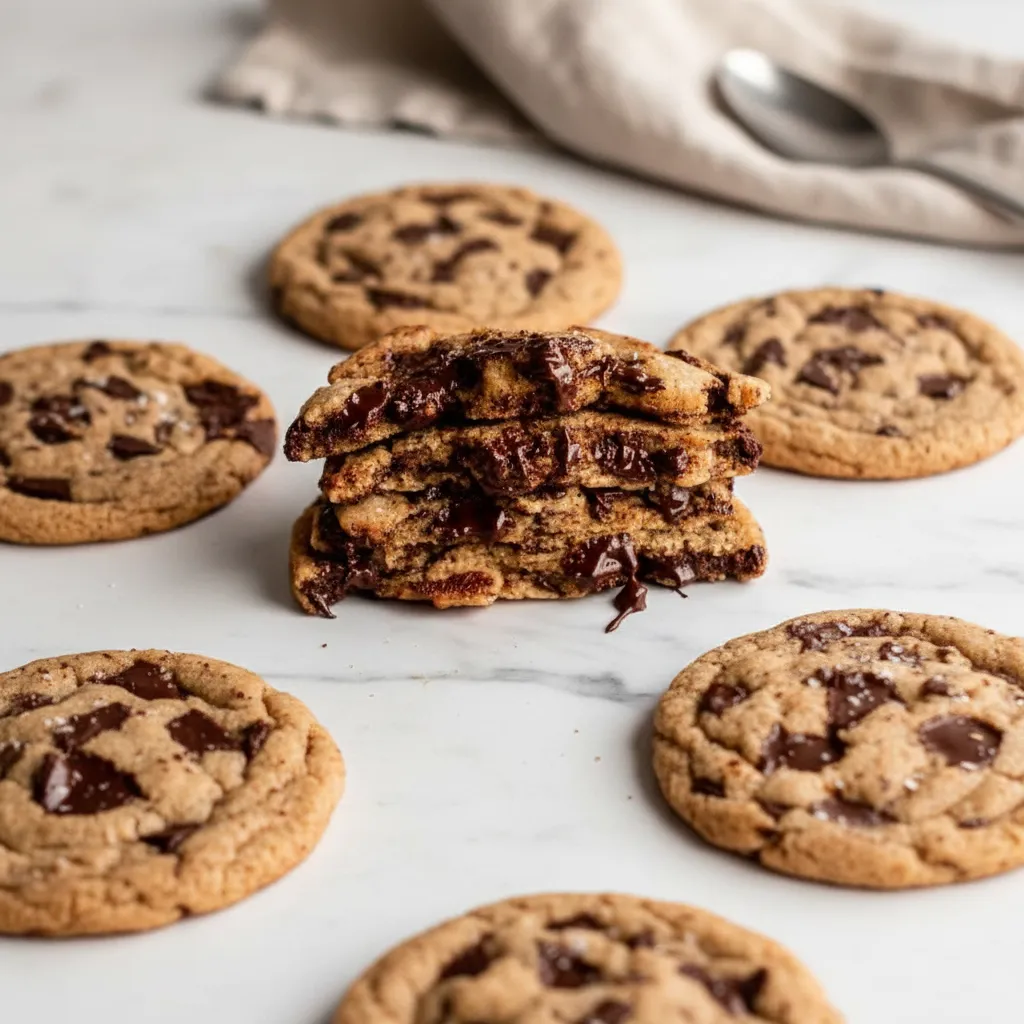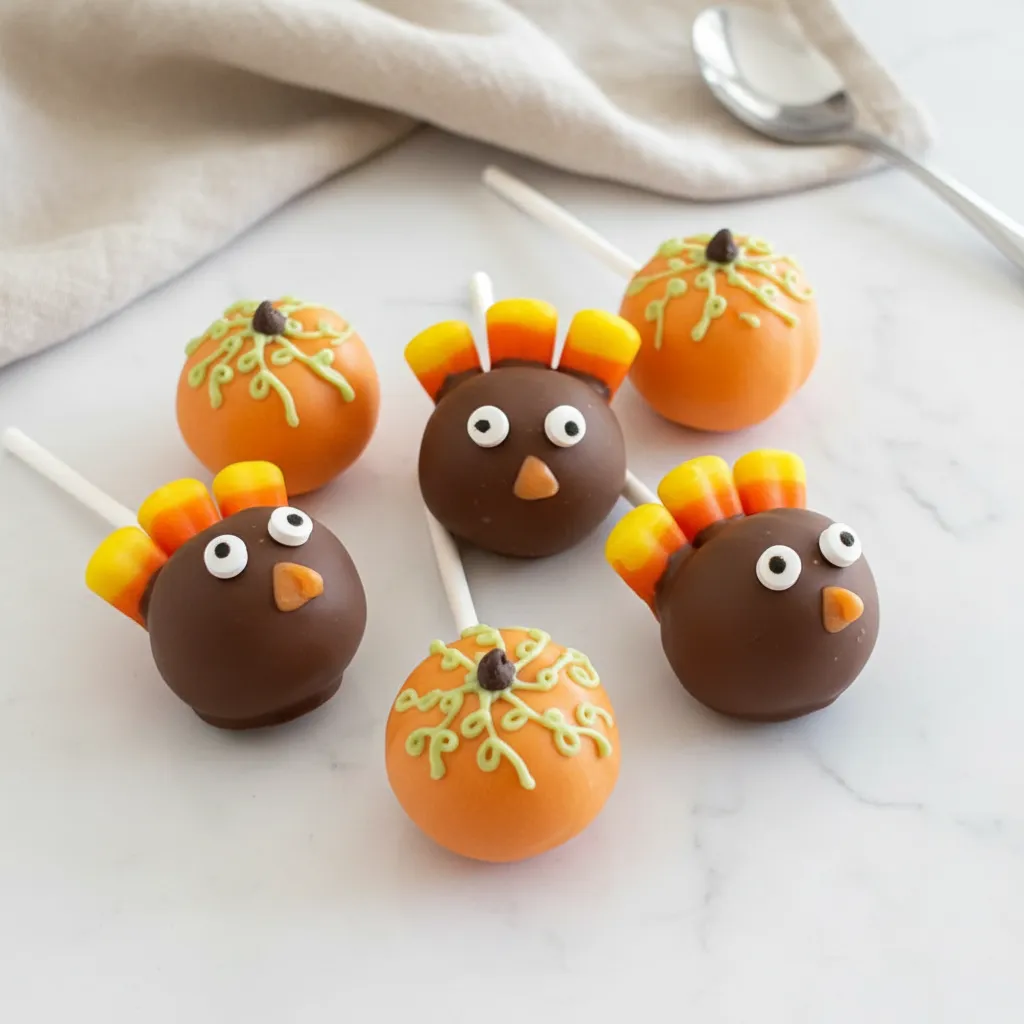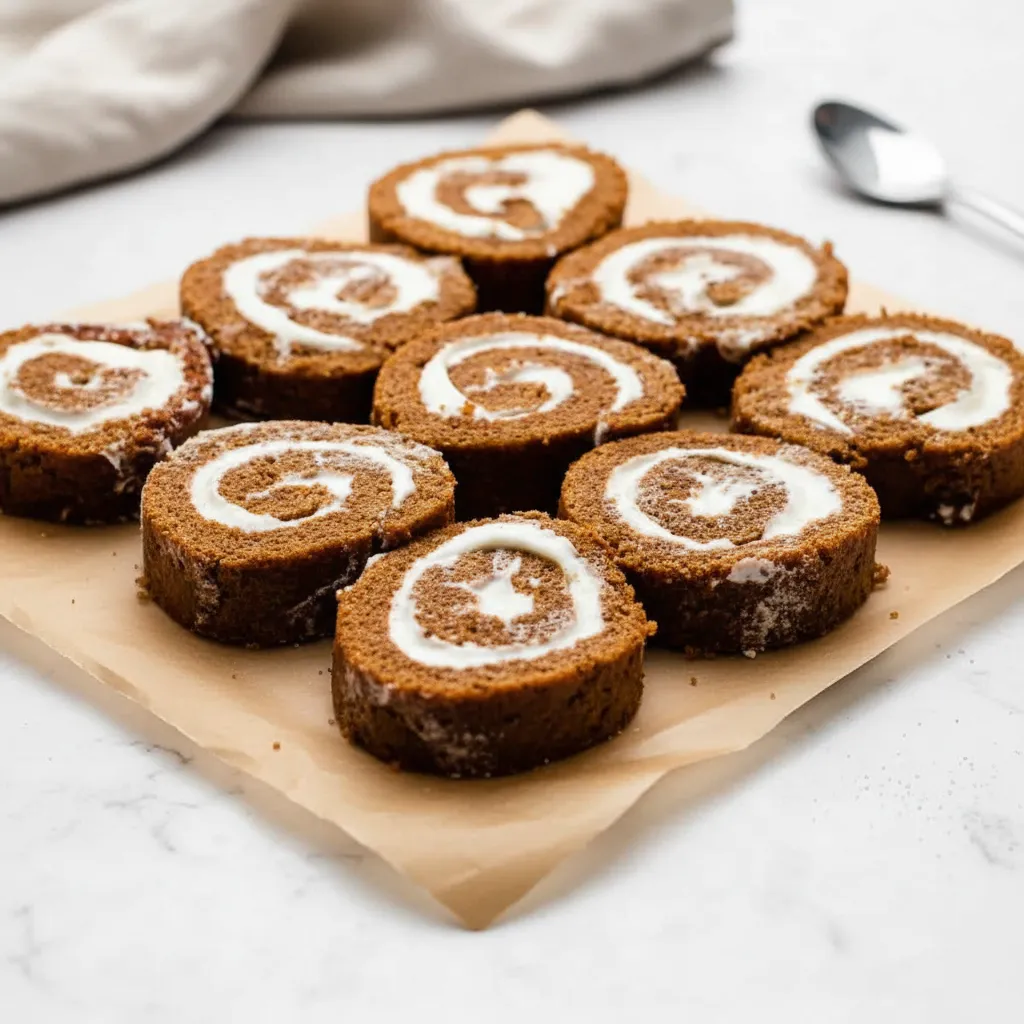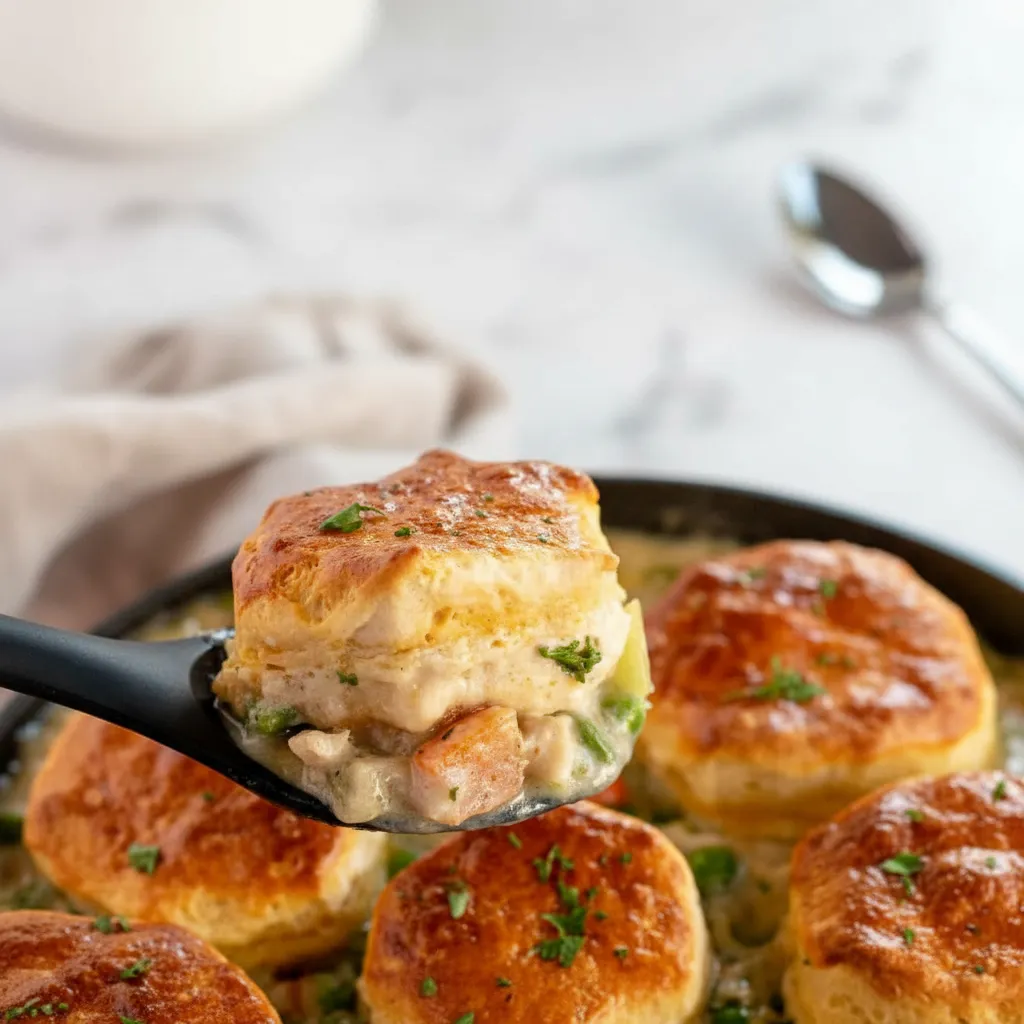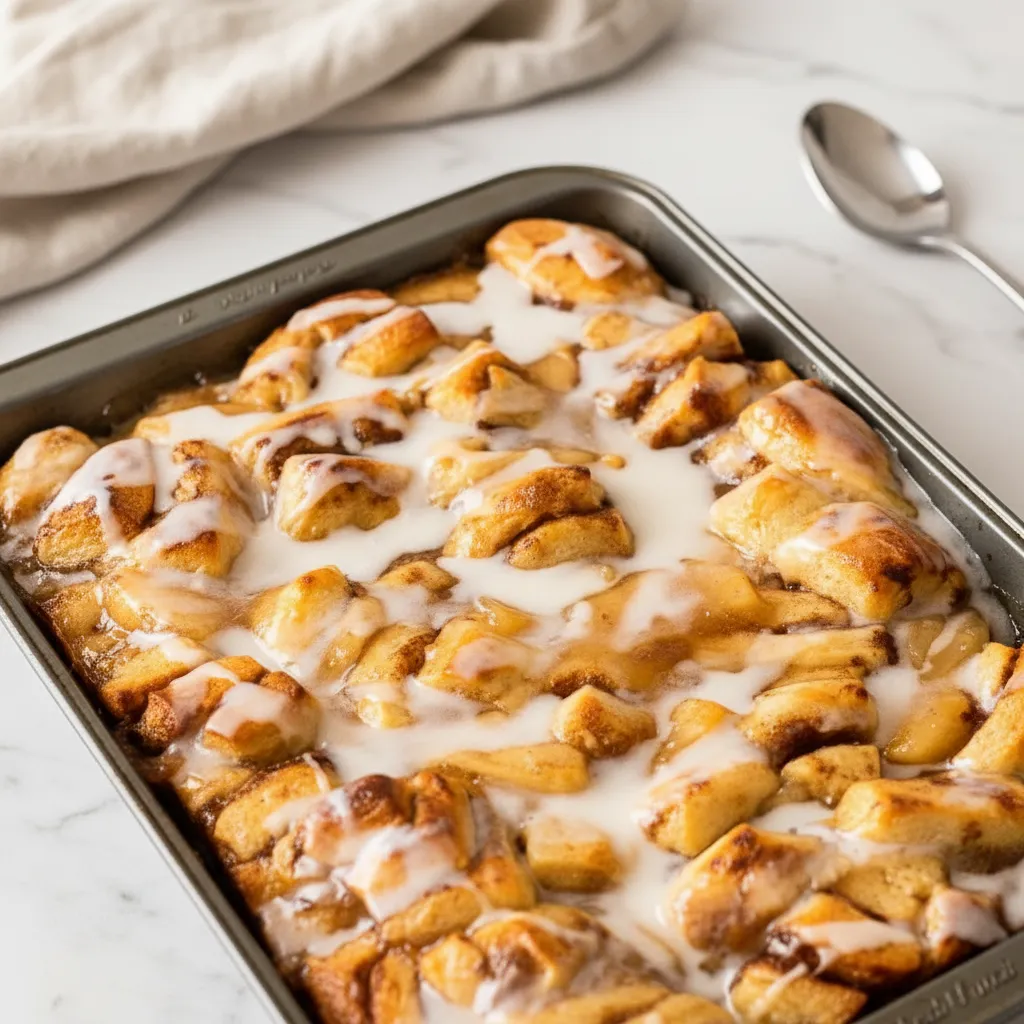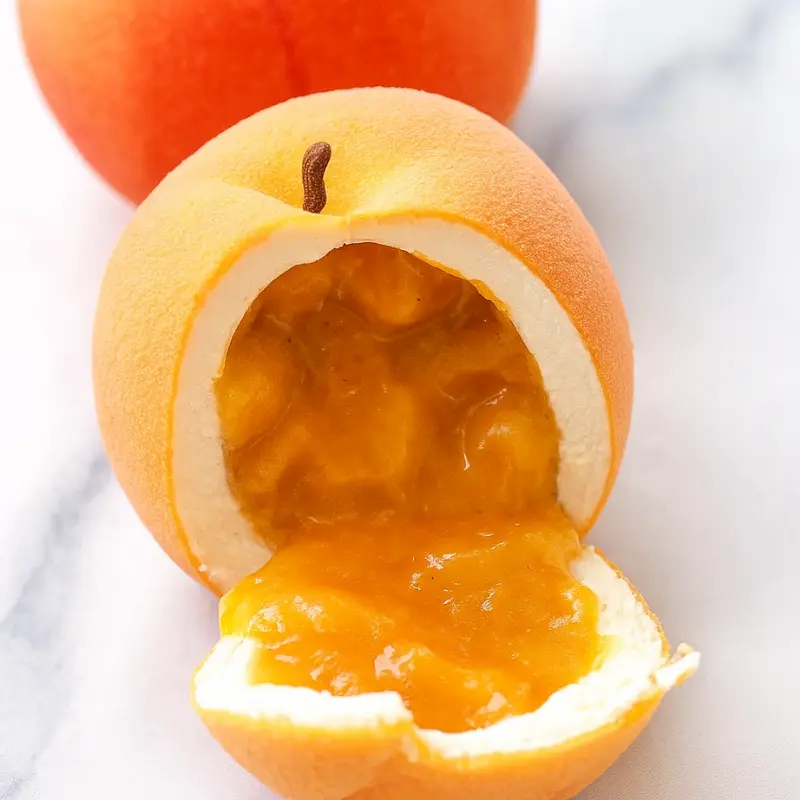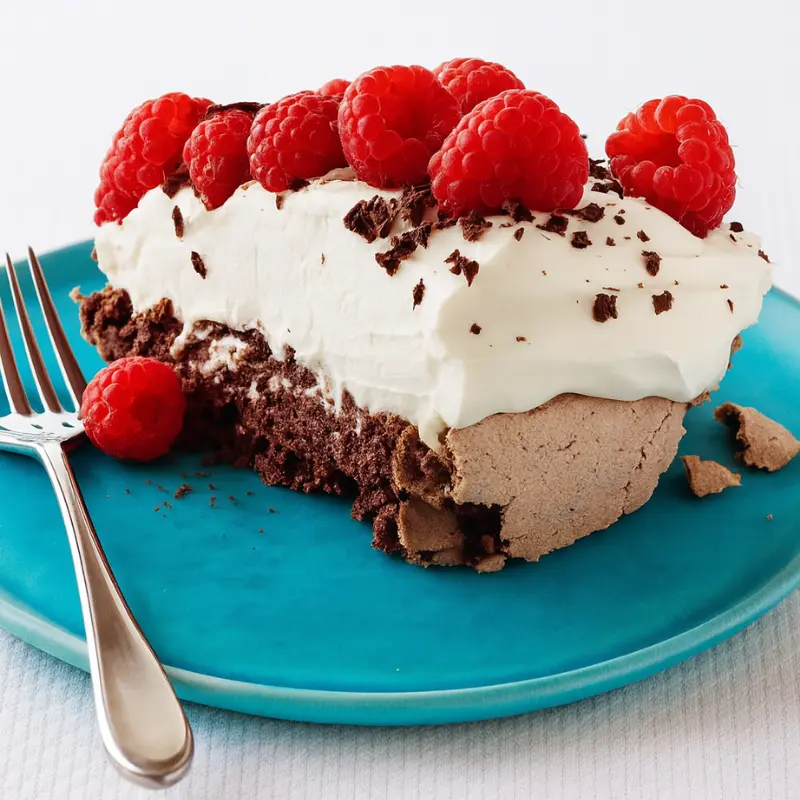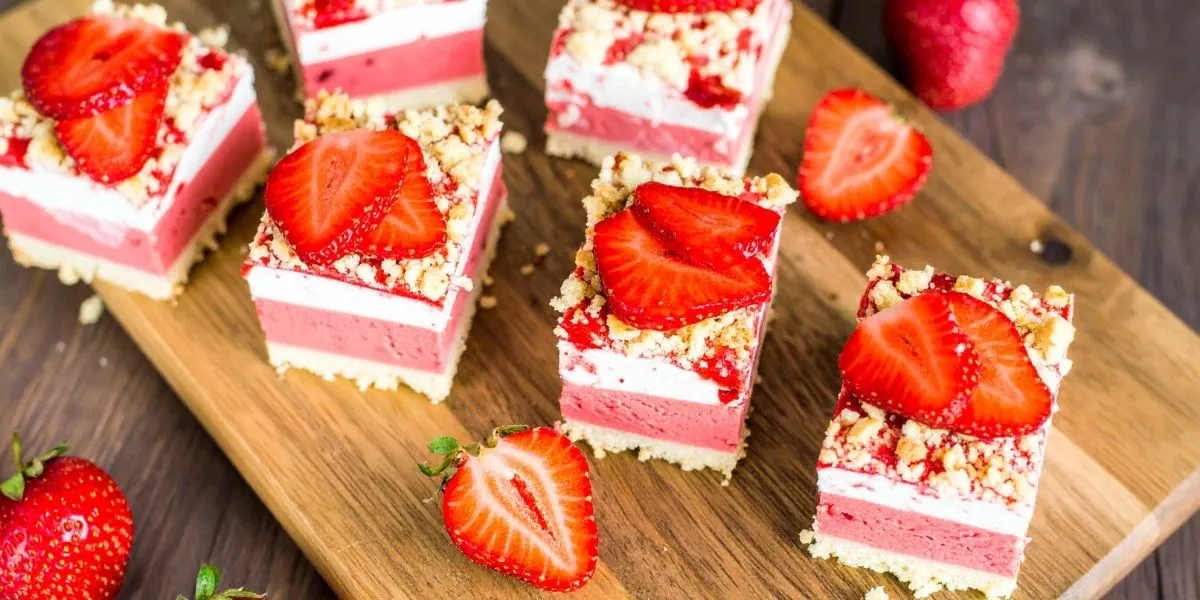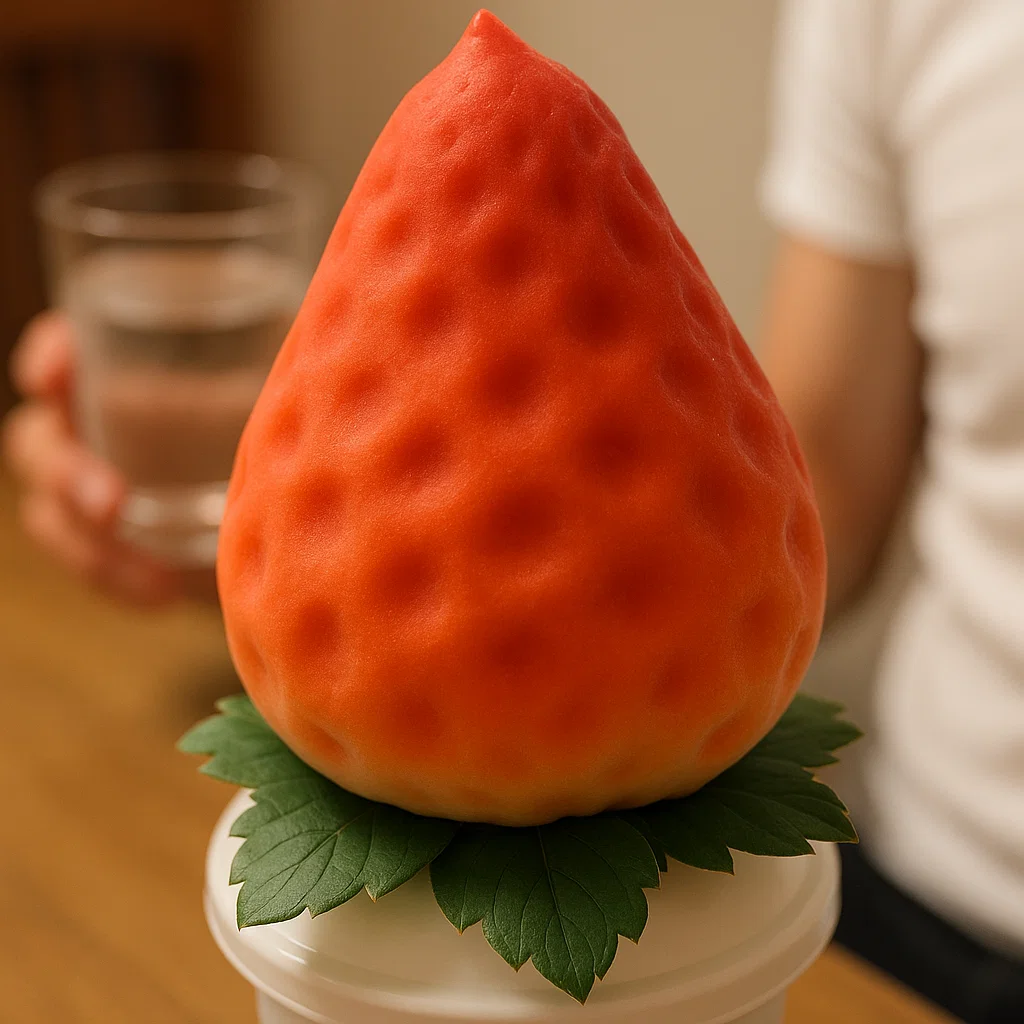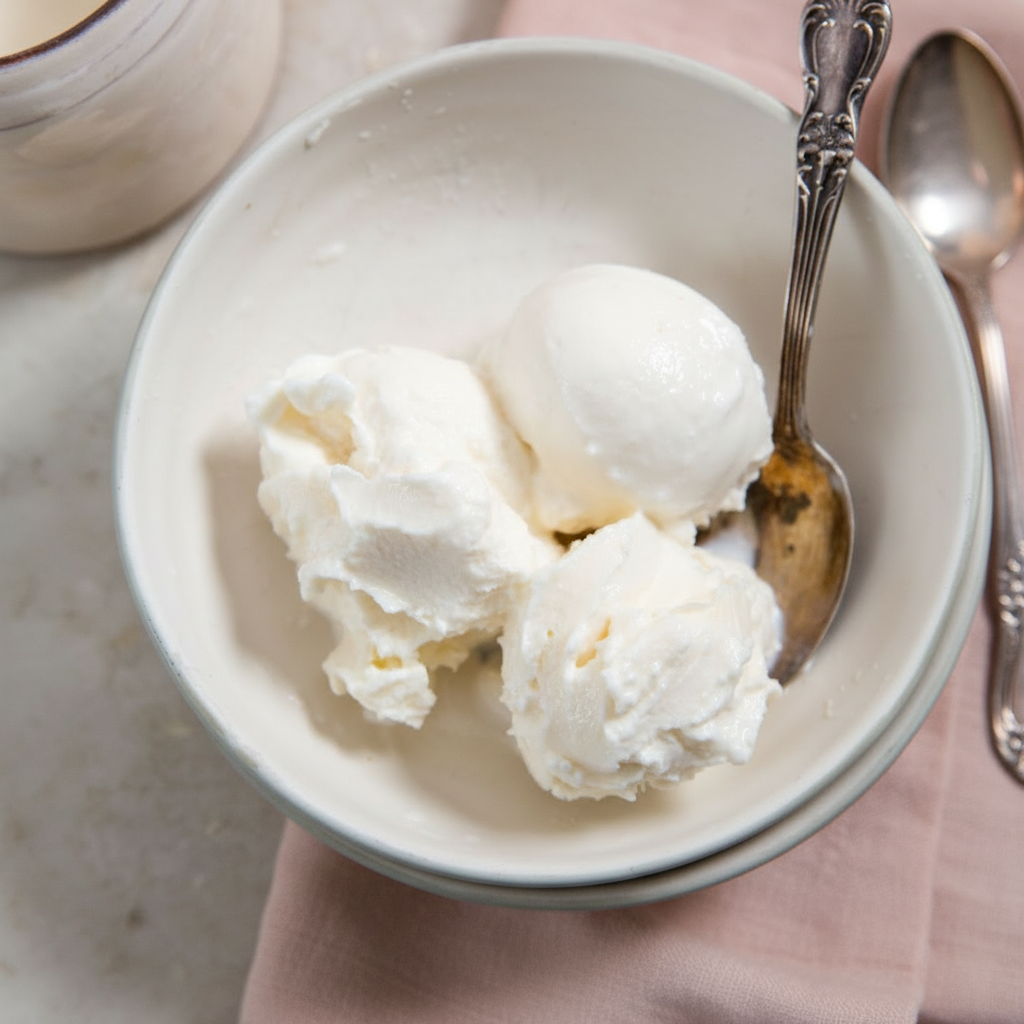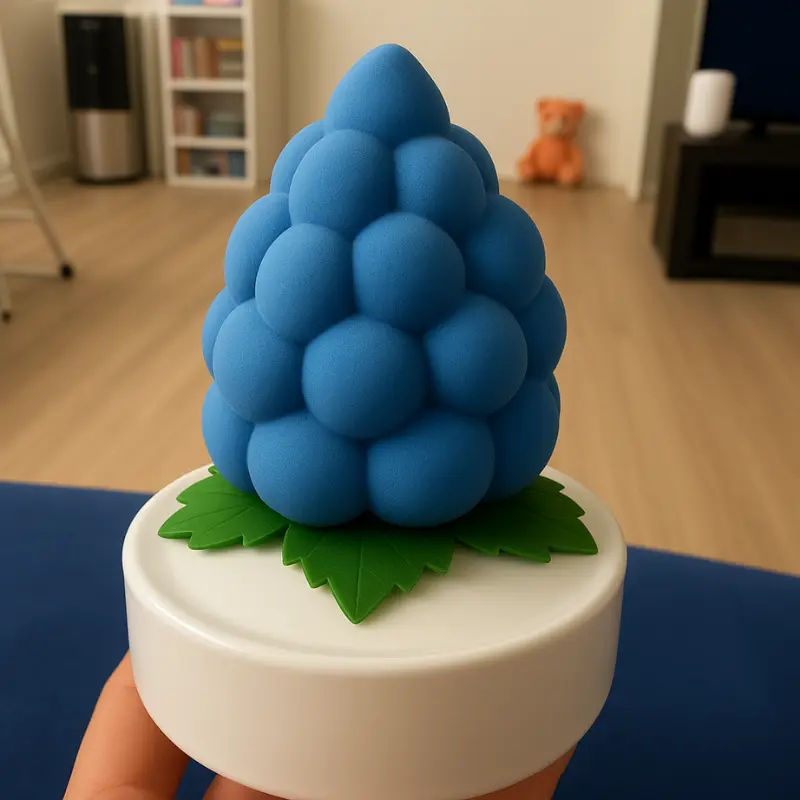If you’ve ever seen a mango mousse cake with mirror glaze, you know it’s a dessert that’s as much art as it is food. That bright tropical color, the smooth-as-glass surface—it’s the dessert version of a summer vacation.
The good news is, you don’t need a professional kitchen to make it happen. With the right steps, a bit of patience, and some temperature know-how, you can create your own glossy showpiece at home. This guide will walk you through the layers, the glaze, and the little tricks that make all the difference.
Jump To:
Chef-Quality Tools You Need
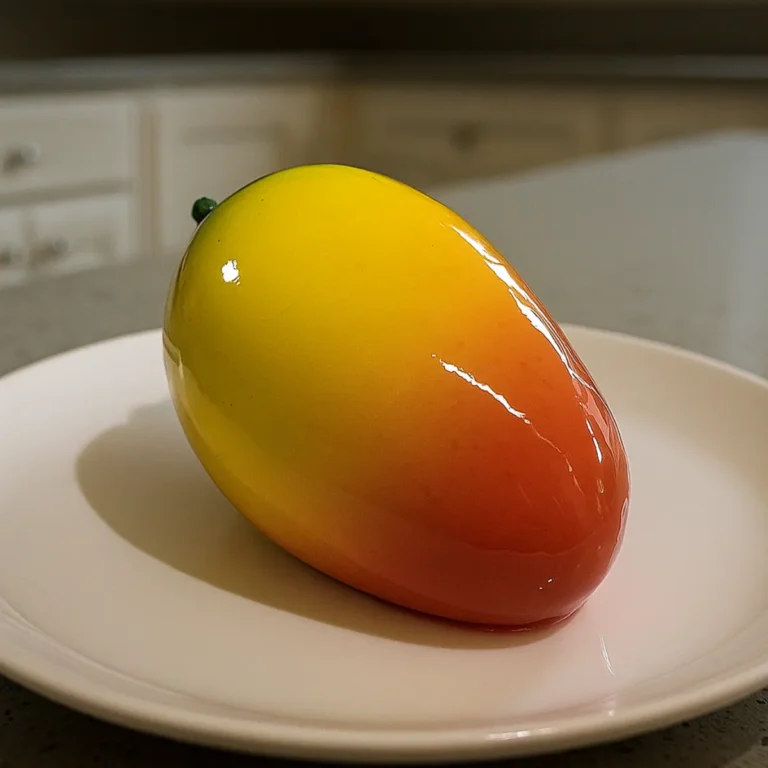
Mango Mousse Cake With Mirror Glaze
A tropical, realistic mango-shaped mousse cake with mango mirror glaze. Features a mango compote insert, infused mango ganache, and a glossy glaze for a stunning finish.
- Total Time: 8 hours 30 minutes
- Yield: 6 servings 1x
Ingredients
For Mango Compote Insert:
2 large ripe mangoes, peeled and cubed
200 g mango puree
1 teaspoon lime juice
50 g sugar
5 g pectin
15 ml mango liqueur (optional)
For Mango Ganache Mousse:
150 g white chocolate, chopped
250 ml heavy cream (split into 125 ml + 125 ml)
2 sprigs lemon verbena or 1 teaspoon lemon zest
5 g powdered gelatin, bloomed in 25 ml cold water
100 g mango puree
15 ml mango liqueur (optional)
For Glaze:
200 g white chocolate
200 g cocoa butter
Gel food coloring (yellow, green, red for realistic mango effect)
Instructions
1. Prepare the mango compote insert by heating mango puree with lime juice, sugar, and pectin. Bring to a boil and cook for 2 minutes. Let cool slightly, then fold in mango cubes and liqueur if using. Fill half-sphere silicone molds and freeze until solid.
2. For the mango ganache mousse, heat half the cream with lemon verbena until just boiling. Cover and infuse for 20 minutes. Strain and reheat, then pour over white chocolate to melt. Stir in bloomed gelatin until dissolved, then add mango puree and liqueur. Chill overnight.
3. Whip the chilled ganache until light and airy. Fill mango-shaped silicone molds halfway, add frozen compote inserts, then top with more mousse, ensuring no gaps. Freeze until solid.
4. For the glaze base coat, melt white chocolate with cocoa butter, tint as desired, and spray or brush onto frozen cakes for a protective shell.
5. Decorate with colored cocoa butter spray for a realistic mango skin texture, blending yellow, green, and red.
6. Serve chilled after defrosting for 30–45 minutes in the refrigerator.
Notes
For the most vibrant glaze, use high-quality gel food colors.
Lemon verbena can be replaced with lemon zest for a citrus note.
Use ripe, sweet mangoes for the best flavor.
- Prep Time: 1 hour
- Cook Time: 20 minutes
- Category: Dessert
- Method: Mousse, Frozen, Glazed
- Cuisine: French-Inspired Tropical
- Diet: Vegetarian
Nutrition
- Serving Size: 1 cake
- Calories: 320
- Sugar: 28g
- Sodium: 40mg
- Fat: 20g
- Saturated Fat: 12g
- Unsaturated Fat: 6g
- Trans Fat: 0g
- Carbohydrates: 32g
- Fiber: 2g
- Protein: 4g
- Cholesterol: 45mg
Mango Mousse Cake Recipe with Mirror Glaze – Step by Step
Making a Mango Mousse Cake with Mirror Glaze at home can feel like crafting a work of art. The rich mango flavor, creamy mousse, and shiny glaze all come together to create a dessert that tastes as good as it looks. The secret is to break it down into manageable stages and work with patience. Chilling times, precise measurements, and careful layering are what make the final cake stand out.
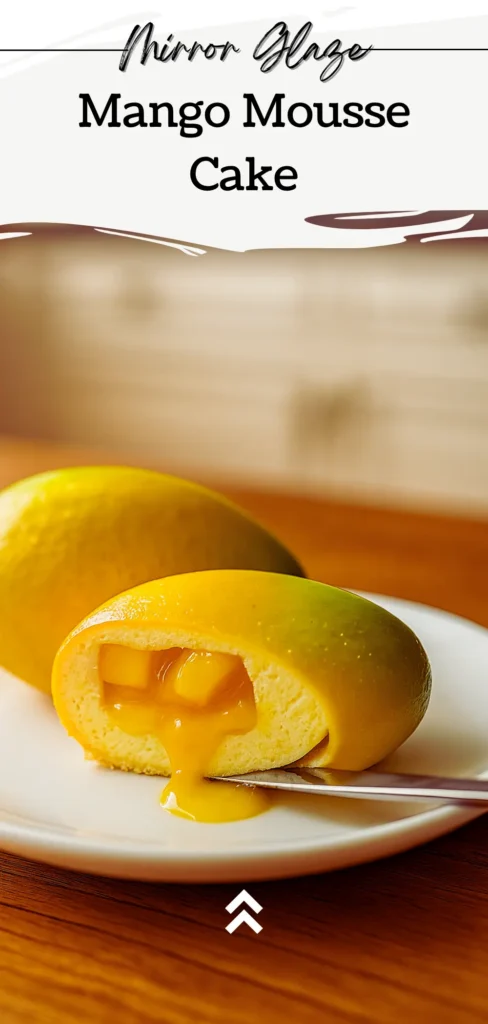
Start with a sponge or dacquoise base, which gives structure to the soft mousse. Next, prepare a silky mango mousse with real mango puree for the most authentic flavor. A hidden layer like mango compote or mango crèmeux can add a burst of freshness in each bite. Once these layers are built and frozen solid, the mirror glaze becomes the star of the show. It is poured over the frozen cake to create a flawless, glass-like surface.
If this is your first time making a mirror glaze, set aside enough time to work without rushing. The glaze needs to be at just the right temperature before pouring, and the cake must be completely frozen. Once you master these steps, you will have a dessert that rivals those in professional pastry shops.
How to Build Each Layer: Dacquoise, Mousse, Compote
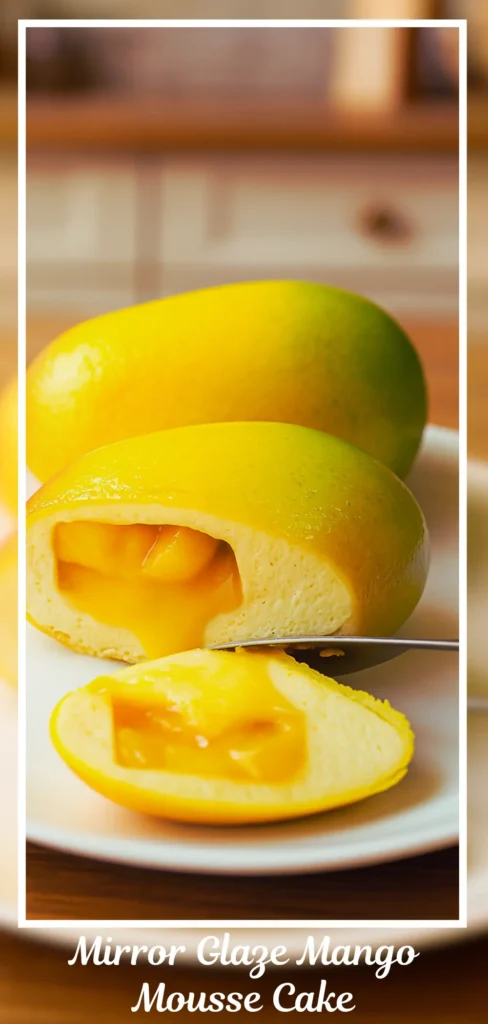
Building the layers is about flavor and texture balance. A dacquoise layer provides a slightly chewy and nutty contrast to the creamy mousse. The mousse should be airy yet stable, which is achieved by folding whipped cream into a mango puree mixture set with gelatin. The mango compote layer adds a concentrated fruity flavor and keeps each bite bright and fresh.
Assemble the cake by starting with the dacquoise at the bottom, then pipe in half the mousse. Add the frozen compote disc in the center, cover with the remaining mousse, and smooth the top. Freeze the entire cake until firm before glazing. Each layer not only contributes to flavor but also helps the cake hold its shape during glazing.
Mango Crèmeux vs. Mousse: What’s the Difference?
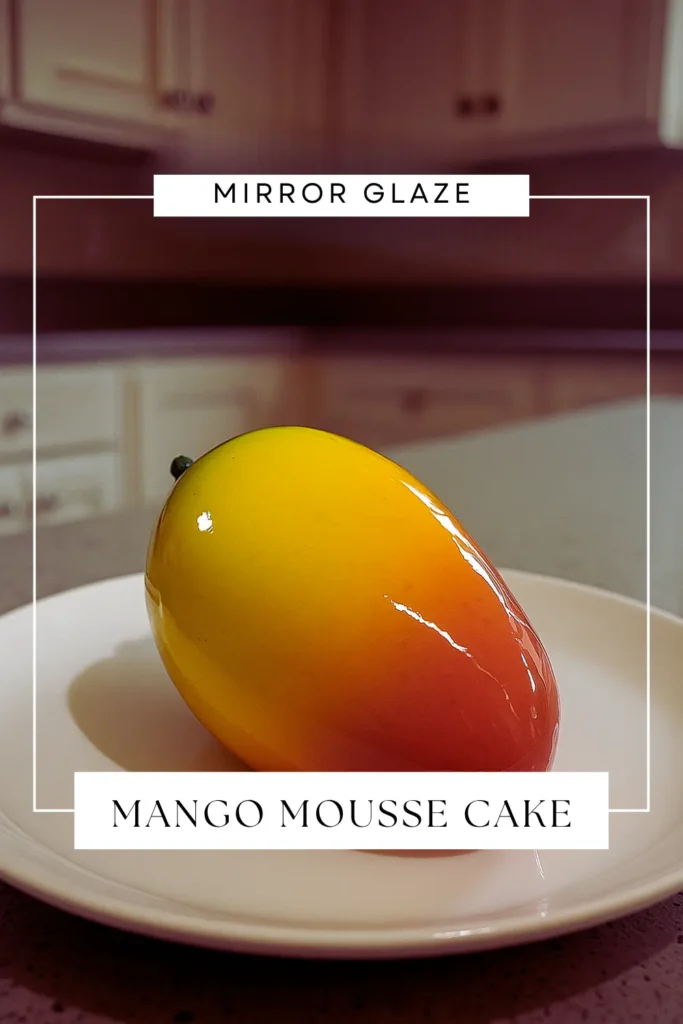
Both mango crèmeux and mango mousse bring flavor, but they differ in texture and richness. A crèmeux is a custard-based preparation made with eggs, sugar, and mango puree, then thickened with gelatin. It is richer and creamier than mousse, making it a good contrast in layered desserts.
Mango mousse is lighter, made by folding whipped cream into a mango puree mixture set with gelatin. It has more air incorporated, giving it a cloud-like texture. Many pastry chefs use both in one cake to provide a variety of textures and flavors.
Freezing and Preparing for Mirror Glaze Pouring
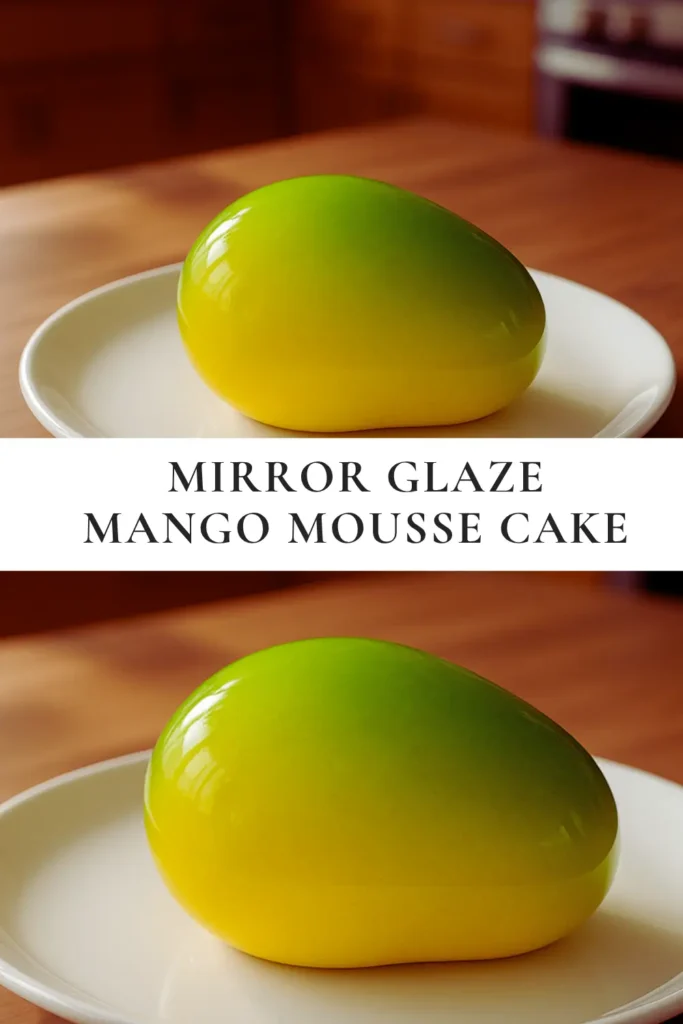
For a perfect mirror glaze, freezing is not optional. The cake must be completely frozen so the glaze sets instantly on contact. Place the cake on a wire rack over a tray to catch excess glaze. Smooth any imperfections on the frozen cake with a hot knife before pouring.
Ensure the freezer is set to a very cold temperature. A cake that is not frozen enough will cause the glaze to slide off unevenly, ruining the smooth finish. Freezing also helps the flavors set, making slicing cleaner and more precise when serving.
Mirror Glaze Basics for Mango Mousse Cakes
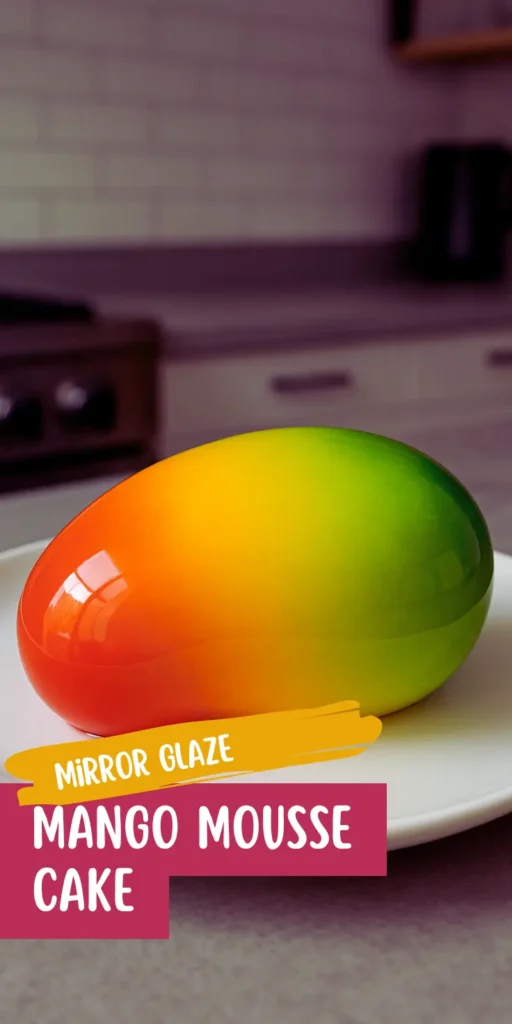
The mirror glaze is what transforms your Mango Mousse Cake with Mirror Glaze into a showpiece. A well-made glaze has a reflective surface, vibrant color, and a smooth texture that clings evenly to the cake. This shiny finish comes from a mix of white chocolate, gelatin, and sugar, combined with condensed milk for creaminess.
Working with mirror glaze requires precision. The right temperature, a bubble-free mixture, and smooth pouring motion are all crucial. It is also important to work quickly, as the glaze will start to thicken as it cools. You can prepare the glaze ahead of time, store it in the fridge, and gently reheat it to the right temperature before using.
If you want bold, bright colors, food gel pastes are the best choice. They provide strong pigmentation without altering the texture of the glaze. For a tropical mango look, a blend of yellow and orange gels works beautifully.
Essential Ingredients: Gelatin, White Chocolate, Condensed Milk, Glucose Syrup
These ingredients are what make the glaze glossy and stable. Gelatin is the key to creating a firm but flexible coating. White chocolate provides a creamy base and helps the glaze set smoothly. Sweetened condensed milk adds richness and a velvety texture. Glucose syrup keeps the glaze from crystallizing and helps with the shine.
Measure each ingredient precisely and use good quality chocolate for the best results. Dissolve gelatin completely to avoid clumps, and mix the glaze gently to avoid creating bubbles.
Ideal Pouring Temperature for a Perfect Finish
The glaze should be poured at around 90 to 95 degrees Fahrenheit. This temperature allows it to flow smoothly without melting the cake. If the glaze is too hot, it will be too thin and run off the cake. If it is too cool, it will not spread evenly.
Use a digital thermometer to monitor the temperature. Stir the glaze gently before pouring to maintain consistency and prevent skin from forming on the surface.
Tips for a Bubble-Free, Ultra-Shiny Surface
To avoid bubbles, mix the glaze slowly and strain it through a fine mesh sieve before pouring. Allow it to rest for a few minutes so any trapped air can escape. When pouring, start at the center of the cake and work outward in a steady, continuous motion.
Avoid touching the glaze once it is set, as fingerprints or smudges will be very noticeable on the shiny surface. Let the glaze drip off naturally before trimming any excess at the bottom.
Mango Mirror Glaze Cake Variations to Try
Once you have mastered the basics of making a Mango Mousse Cake with Mirror Glaze, you can start experimenting with exciting variations. These changes can be as simple as adding complementary flavors or as creative as transforming the entire presentation. The key is to keep the mousse and glaze techniques consistent while allowing room for new tastes and textures.
One approach is to switch up the flavor layers inside the cake while keeping the mango as the star. Another is to change the glaze colors for a more artistic finish. You can even adjust the shape of the cake for different serving styles. These variations not only make the dessert more versatile but also keep it interesting for guests.
Coconut Mango Combo: Using Coconut Mousse or Crèmeux
Coconut pairs naturally with mango, creating a tropical flavor profile. You can replace part of the mango mousse with coconut mousse for a creamy, aromatic twist. Coconut crèmeux also works well, adding richness that complements the bright mango flavor. To enhance the combination, top the finished cake with toasted coconut flakes for texture and visual appeal.
Mini Dome Cakes for Individual Serving
Mini dome cakes are perfect for parties and portion control. Each dome can have layers of mango mousse, compote, and a small sponge base. Glazing these individually ensures a neat, uniform finish for every serving. The smaller size also allows for more glaze colors and designs.
Adding a Tropical Twist with Banana or Lime Sauce
A drizzle of banana puree or lime-infused syrup can elevate the flavor. Banana adds natural sweetness and a creamy texture, while lime provides a refreshing contrast to the richness of the mousse. These sauces can be served alongside or drizzled on the plate for a restaurant-style presentation.
Common Challenges and Pro Tips for Mirror Glaze Cakes
Even experienced bakers encounter challenges when making a Mango Mousse Cake with Mirror Glaze. The glaze can lose its shine, develop bubbles, or slide off the cake. These problems often come down to temperature control, ingredient preparation, or timing. With careful adjustments, these issues can be avoided.
The most important rule is to keep everything cold until the moment you glaze. This helps the coating set quickly and evenly. Choosing high-quality ingredients and measuring them precisely will also improve the result. Finally, working in a calm, organized space reduces mistakes and keeps the process stress-free.
Keeping Everything Cold: Why Freezing is Non-Negotiable
Freezing locks the layers in place and ensures the glaze sets instantly. Without proper freezing, the glaze can absorb into the mousse, ruining the smooth look. Keep the cake in the freezer for several hours or overnight for best results.
Color and Presentation: Using Food Gel Pastes and Marbling Techniques
Food gel pastes provide strong, vibrant colors without affecting the glaze’s texture. For marbling effects, divide the glaze into separate bowls, tint each with a different color, and pour them together over the cake in a controlled swirl pattern. This creates a striking, multi-color finish.
Dealing with Gelatin: Blooming Tips and Avoiding Clumps
Always bloom gelatin in cold water before adding it to warm liquids. This allows it to dissolve completely and prevents lumps. Stir gently to combine, avoiding vigorous mixing that could trap air bubbles.
Trending Recipe Ideas and User Inspirations
The Mango Mousse Cake with Mirror Glaze has captured the attention of bakers worldwide thanks to its striking appearance and tropical flavor. Social media has fueled its popularity, inspiring new techniques, color combinations, and creative presentations. Whether you stick to the classic golden mango glaze or experiment with bold artistic designs, the possibilities are endless.
Sharing your creation online can be just as satisfying as making it. Many bakers post videos of their glaze pours, showcasing the smooth flow and glossy finish. Others focus on creative plating and unique flavor twists to make their dessert truly personal.
“Galaxy”-Style Mirror Glaze Effects in Tropical Colors
Galaxy designs use a mix of vibrant tropical colors like deep orange, golden yellow, and turquoise. These colors are swirled together during the pour to create a dreamy, multi-tone effect that catches the light beautifully.
Home Baker Success Stories with Mango Mousse Cakes
First-time bakers often find the process surprisingly manageable when following clear steps. Many share stories of the excitement they feel when revealing the glossy finish for the first time. This sense of achievement makes the cake as rewarding to make as it is to eat.
Quick Instagram-Friendly Mango Mirror Glaze Cake Formats
Mini mousse domes, single-serving portions, and even heart-shaped molds have become popular for quick, shareable photos. These smaller cakes are easier to handle, allow for playful color experimentation, and photograph beautifully under natural light.
FAQ
Can you pour mirror glaze over mousse?
What type of cake is best for mirror glaze?
What is the difference between glaze and mirror glaze?
When to use mirror glaze?
Does a mirror glaze harden?
How to stack a mousse cake?
Share Your Experience
We would love to hear how your Mango Mousse Cake with Mirror Glaze turned out. Did you stick to the classic golden glaze, or did you experiment with new colors and flavors?
Share your tips, tweaks, and triumphs in the comments below. If you ran into any challenges, let us know so we can help troubleshoot for next time.
If you snapped a photo of your meal, share it on Pinterest or Facebook and tag @CookFastRecipes so I can see and feature it in my stories. Let’s keep the quick, healthy snack ideas flowing!


